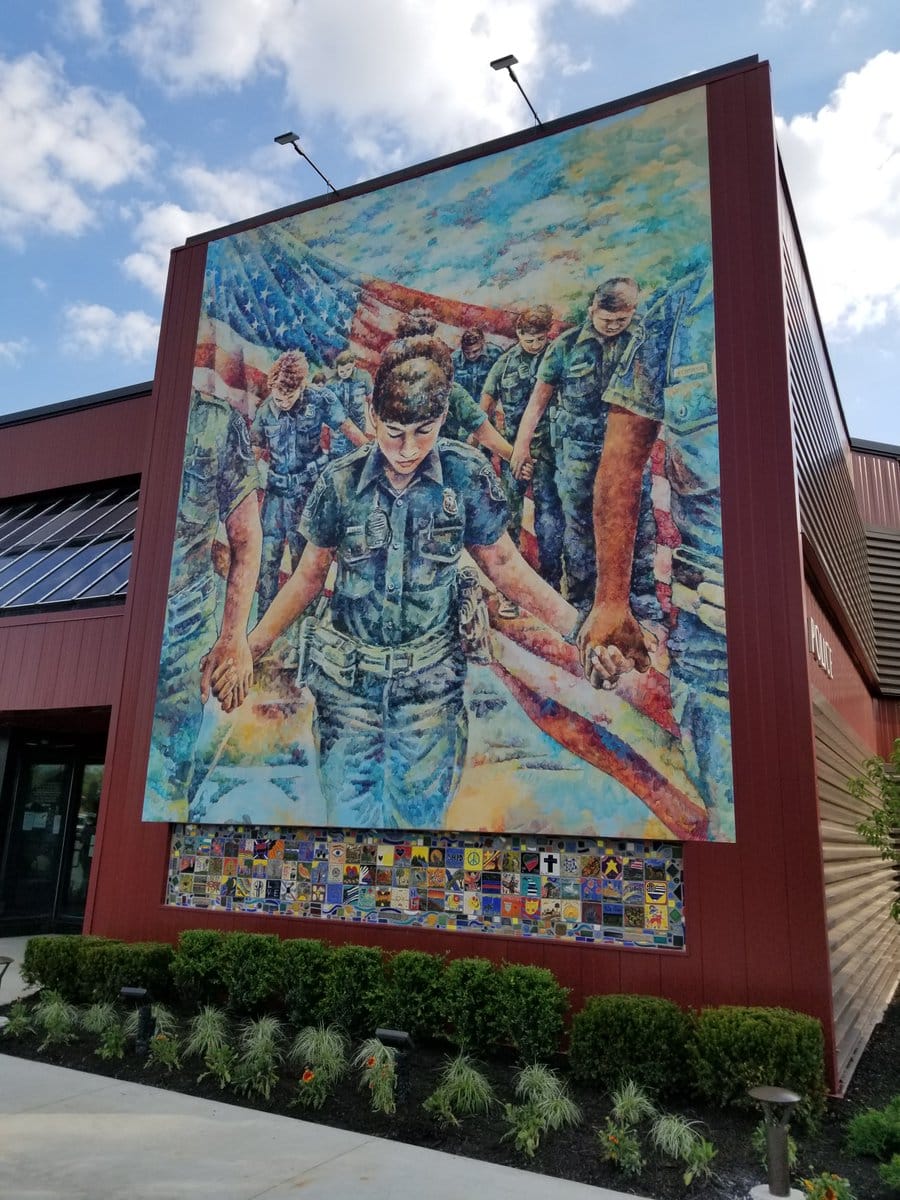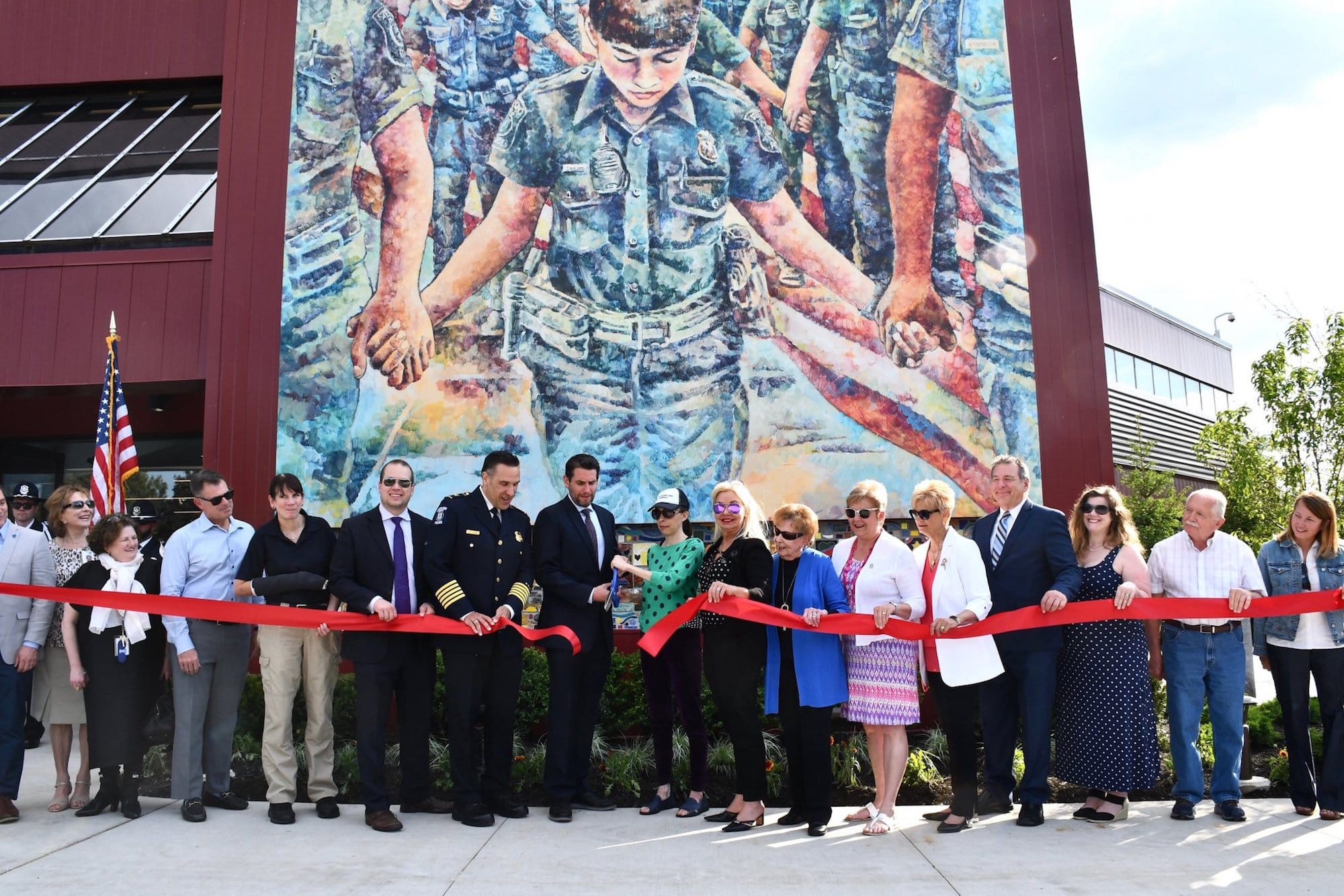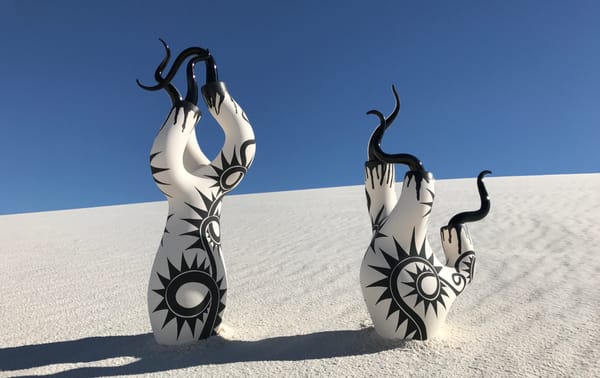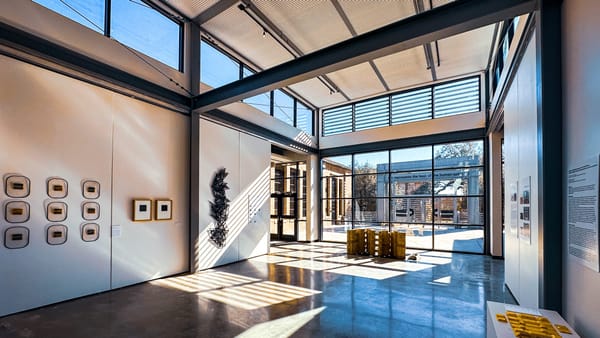Detroit Institute of Arts Faces Backlash Over “Pro-Cop” Mural
Artists including Dawoud Bey, Jordan Casteel, and Kevin Beasley criticized the institution’s partnership on the mural, titled “To Serve and Protect.”

Following a tumultuous year marked by a spate of allegations against leadership, the Detroit Institute of Arts (DIA) is again at the center of controversy, this time for a mural at the Sterling Heights Police Department created through its Partners in Public Art (PIPA) program. The work, titled “To Serve and Protect," depicts a multiracial group of police officers holding hands and bowing their heads against the background of a US flag.
The mural has been in the works for three years, commissioned in 2018 from artist Nicole Macdonald, but it was finally installed and unveiled last week. Photographs of the ribbon-cutting ceremony at the station shared on social media sent shock waves across the arts community -- especially among some artists of color who viewed the work as an indefensible "pro-cop" symbol at a time of heightened awareness of systemic and racist police violence.
In the comments section of several social media posts, including two by DIA that have since been deleted by the museum, artists such as Dawoud Bey, Jordan Casteel, and Kevin Beasley criticized the institution's partnership on such a project.
"When I first saw the now removed Instagram post that the Detroit Institute of Arts had sponsored a pro-police mural in the Detroit suburb of Sterling Heights, I was both flabbergasted and upset," said artist Dawoud Bey, who has completed a residency at the museum and whose works reside in its permanent collection, in an email to Hyperallergic.
"Seeing the picture of the ribbon cutting ceremony for the mural, which shows police locked hand in hand, with an all white group of citizens celebrating this piece at the very moment when the issue of pervasive police violence is under the national microscope seemed an almost deliberate provocation," he added. "It would seem to indicate much deeper problems at the institution if someone thinks this is an appropriate 'community based' project."

The PIPA program is supported by community investment in a tri-county millage, a funding model embraced by the museum since 2012. The annual property tax ($20 for a home valued at $200,000) funds approximately two-thirds of the museum’s annual operating budget; in exchange, the museum provides specific benefits negotiated with each county, such as free weekly programs for seniors. In a recent op-ed for Hyperallergic, DIA Director Salvador Salort-Pons and Eugene Gargaro, Chairman of the board, said the millage transformed the museum "from an often inward-looking one to one that MUST serve its community."
But the recent uproar over the Sterling Heights artwork raises difficult questions about the model, and the extent of the museum's role and agency in projects sanctioned by its community partners.
“Like all PiPA projects, the artist designed the mural based on input from the specific community that requested it,” DIA told Hyperallergic. “As outlined in the contracts that the museum has with each county that provides funding to the museum for these projects, community partnerships like PiPA must ‘respect and sustain the mission of the local organization and preserve the local character of each program.’”
“Since 2018, the year this mural was painted, much has transpired in our country and we understand and respect that many members of our community are hurt and angered,” the museum continued. “To support healing, we will continue investing in partnerships with community-based non-profits in the tri-county region led by and serving the BIPOC community.”
The spokesperson added that the museum's social media posts about the mural were taken down “out of concern for individuals who were being personally targeted in the comments.”
Nicole Macdonald, the artist who created the mural, said her original design did not include an American flag and was meant to be “about peace and introspection.” She was encouraged to add the background, which she regrets — along with agreeing to the project altogether.
“I feel completely sick about this and feel like I was used,” Macdonald told Hyperallergic. “I consider myself a socialist, against police brutality, pro-police reform, and completely in line with the tenants of Detroit Will Breathe demands, published here, about police defunding/reform.”
“I wanted to go to this unveiling to re-sanctify it. I thought I might have a receptive audience to the message of peace and humility,” she said. “I was shoved into the group as they posed in front of the painting with guns, which I’m totally against.”
In a message to DIA Staff Action, a group of local arts workers advocating for reform at the museum, she pledged to “never work for the DIA again” and offered to petition to have the work removed.
“I agree DIA outreach should be done in different communities, in different ways, and perhaps should not be done at all until they reform with guidance from BIPOC Detroiters,” Macdonald told the group in her message. “This is not my idea of where tax dollars should be spent.”
DIA Staff Action posted a scathing statement against the mural on its Instagram page. Calling it “out of touch,” the group noted that the work was unveiled on the day before the birthday of Breonna Taylor, a Black woman murdered by police while sleeping in her home last year, whose name has become a rallying cry at Black Lives Matter protests against police brutality.
The group has been vocal about the need for a change in leadership at the institution for years. Last November, a leaked recording of a confidential meeting at DIA exposed the findings of an independent investigation into toxic workplace allegations; workers described the director as “erratic, autocratic, condescending” and “intolerant of dissent.” DIA Staff Action’s petition demanding the resignation of Salort-Pons and Gargaro, released in 2020, has garnered hundreds of new signatures in the last two days, with nearly 2,000 names so far.
“The people currently leading the institution continue to be unfit and unwilling to properly address the crisis they created, and serve their staff and diverse communities in a publicly funded institution,” said DIA Staff Action in a statement shared with Hyperallergic.
“We believe it is deplorable that instead of taking responsibility for the content and timing of the mural, they deflect to erase valid criticism from the community,” they added.





